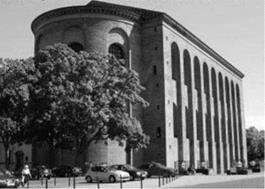Today, both restorers and archaeologists alike would struggle to work without the aid of bonding, not only because this joining technique does not harm sensitive substrates but it also allows dissimilar materials to be joined to each other. Yet, it is often not easy to decide whether to use a modern or an ancient, original adhesive formulation. It is clear that the ancient binders have ‘got along’ with the adherents over the years (hundreds or thousands of years, to be precise), whereas the long-term behavior of modern formulations, when ‘imported’ into restored objects, can only be determined using costly analyses.
An example of the use of bonding in restoration is that of Abu Simbel, an archeological site comprising two massive rock temples in southern Egypt. This was relocated during the creation of Lake Nasser, an artificial water reservoir formed after the building of the Aswan dam on the Nile River. The entire site was cut into blocks and reassembled in a new location using modern adhesives, which are not visible at all (and will hopefully remain invisible for the next 2000 years).
Finally, a somewhat strange example is the Palastaula in Trier, Germany, known today as the ‘Constantine Basilica’, which was erected by the Roman Emperor Constantine the Great in 310 ad (Figure 8.97). The original classical brick building was plastered and painted, but in the 19th century it was rebuilt on a major scale using the Roman fragments of the walls, at the request and expense of King Frederick William IV of Prussia. For this, sandstone and modern mortar were used instead of bricks, and the building was used as a church in later times. During the Second World War, the building was largely destroyed by bombardment but then rebuilt again, this time in brick construction. During the 1950s, an archeologist — who obviously had participated in this second restoration — reported that the original Roman wall had survived the attacks virtually unharmed, whereas the main damages had been found in that part of the building which had been restored in the 19th century. Remembering that the Ancient Romans used to reinforce their mortar with bovine milk and blood (casein and blood albumin, see Chapter 2), and that this was still standard practice in medieval times but no longer in the 19th century, provided the detail that makes the story believable. Even in unprotected condition and without plaster, the
|
Figure 8.97 The Roman Constantine Basilica in Trier. |
Roman mortar could not be scraped off, even with a sharp pocket-knife, as long as 2000 years after its creation, whereas the modern mortar readily crumbled after only 50 years. If the 19th century restoration had given consideration to the ancient materials, the joints would have been ‘bombproof’, saving the 20th century restorers much work (see Section 8.3).
 23 января, 2016
23 января, 2016  Pokraskin
Pokraskin 
 Опубликовано в рубрике
Опубликовано в рубрике 